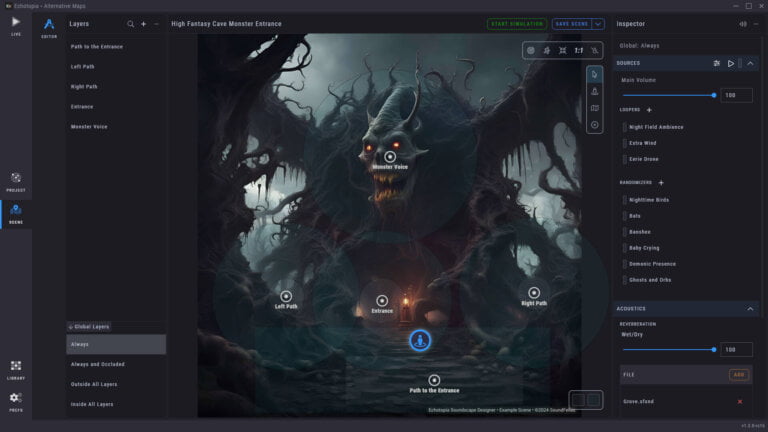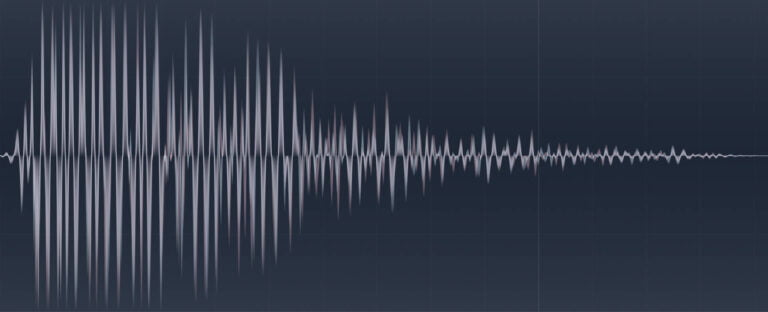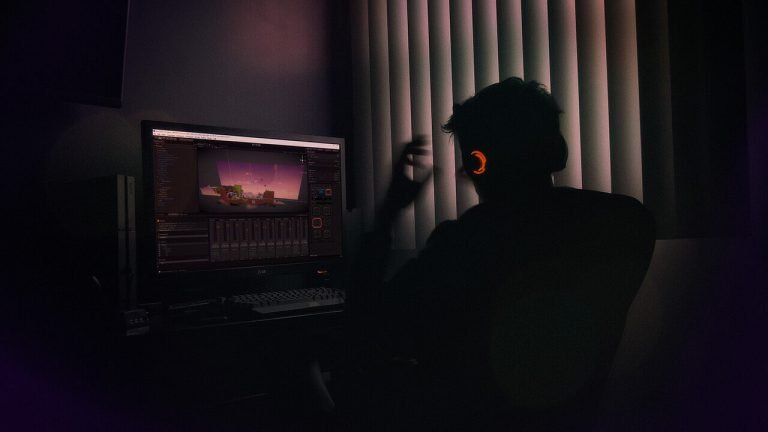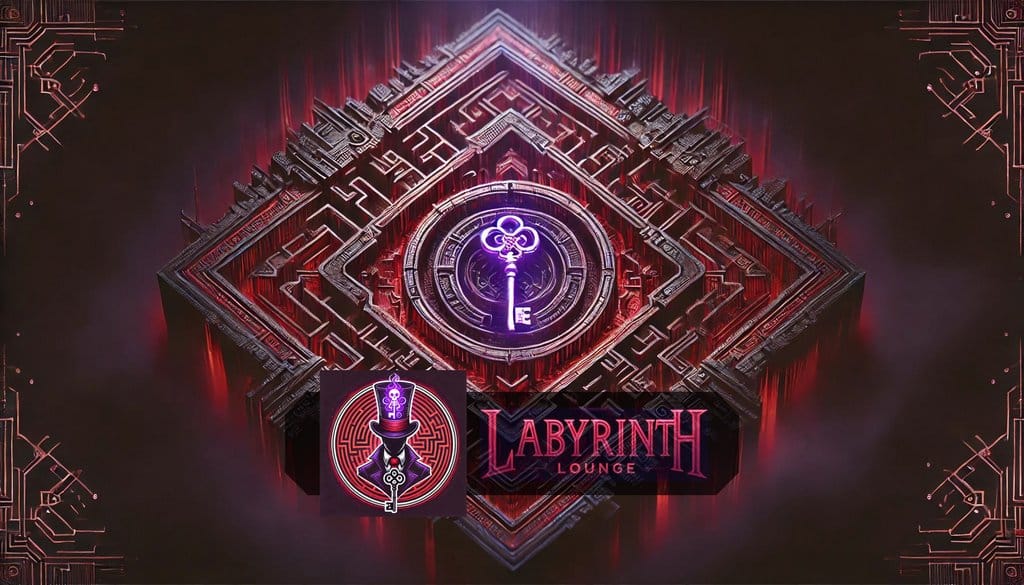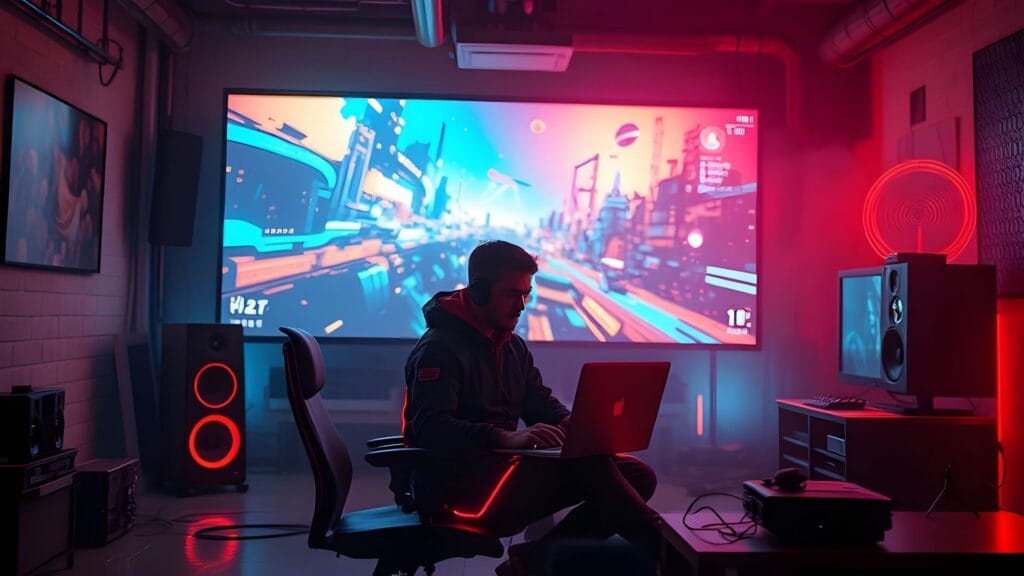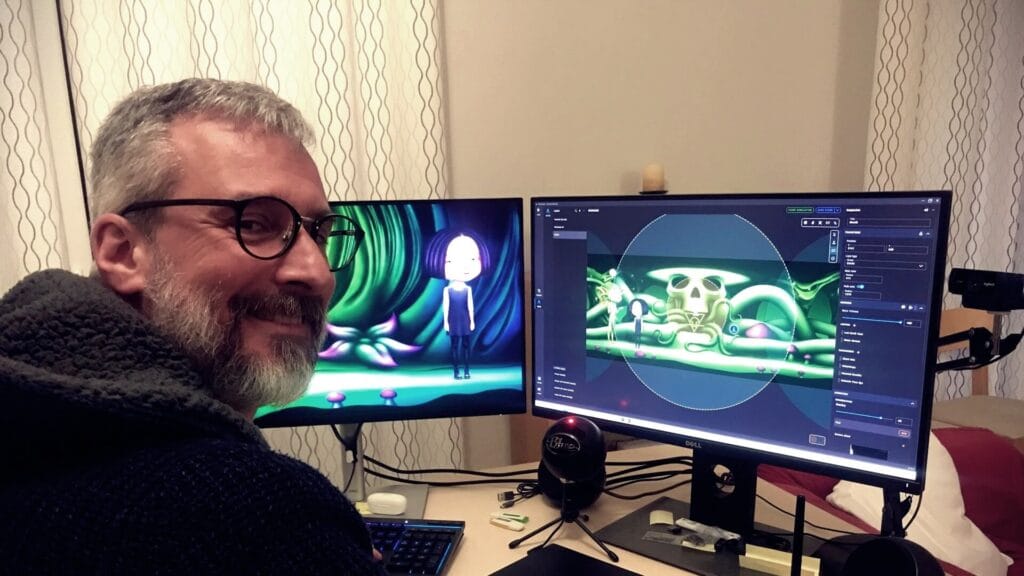Using noiseprints to create the base of your soundscape is one proven method to keep your players immersed in your game's world. Taken from the film industry, in this article, I propose ways to implement this valuable resource in games.
Immersion in games is all about making the brain of the player believe - at least in some amount - that she or he is there.
We sound designers, have a couple of basic tricks up our sleeves, to create that exact effect in the listener’s brain.
One of those tricks is a basic noise drone, that carries the identity of the place that the action takes place. Audio engineers and sound designers in films, refer to it as the roomtone and it is also know as presence.
A more descriptive term that we also use in our own Ambience Kits is the Noiseprint. The 'noise' part of the name comes from the fact that this kind of sound is categorized as noise. And the "print" part of the name relates to the indentation or mark made on a surface or soft substance, like with a fingerprint. Hence, noiseprint.
At SoundFellas we find that part of any soundscape very important, that is why we extract the noiseprints from any environmental recording we capture for our Ambience Kits, and we include those extracted loops as isolated/separate sound files. To do that we use specialized techniques and tools, to extract only the frequencies that give the identity of the place and nothing more or less.
We do that to make our ambience libraries very agile, so creators working in games or film, can use them in combination with the isolated sound effects that we also extract and provide with each ambience library, to create a vibrant and dynamic soundscape for the players. In essence, the game developer can develop stochastic algorithms that play back noiseprints and isolated sound effects together to render the environment's sound dynamically according to the state of the game. Creators working in augmented, virtual or mixed reality experiences get great benefit from the agility our ambience libraries offer, to create dynamic and life-like environments that blend with the real or virtual environments of their choosing.
[icon name="info-circle" prefix="fal"] Info
Noiseprints (aka roomtones) are basic noise drones that carry the identity of the place that the action takes place.
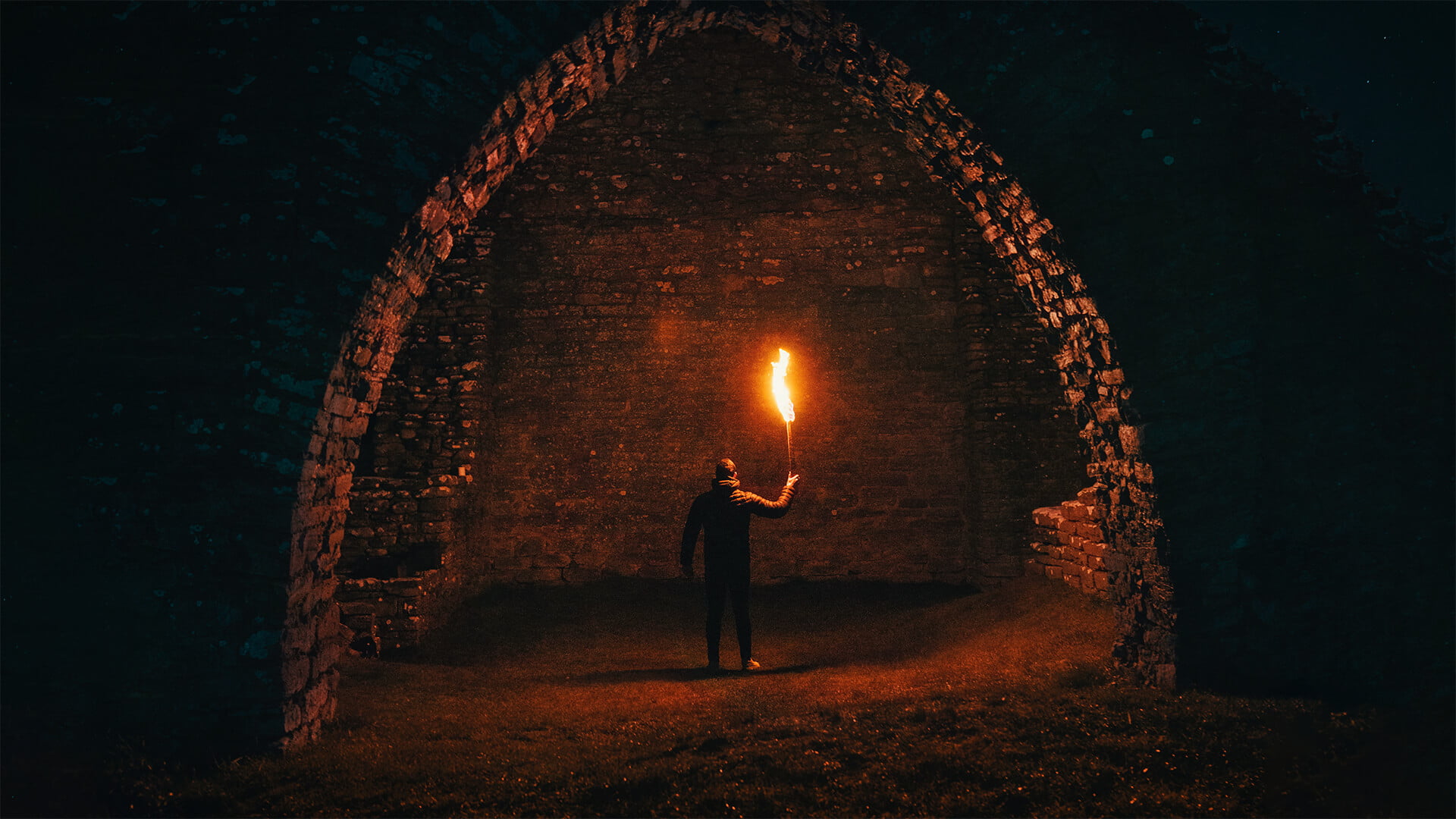
First a definition
But to unlock the full potential of the noiseprints, to create an immersive atmosphere for your games, we must go a little further down the rabbit hole.
First, let’s look into a definition, Wikipedia offers a good one:
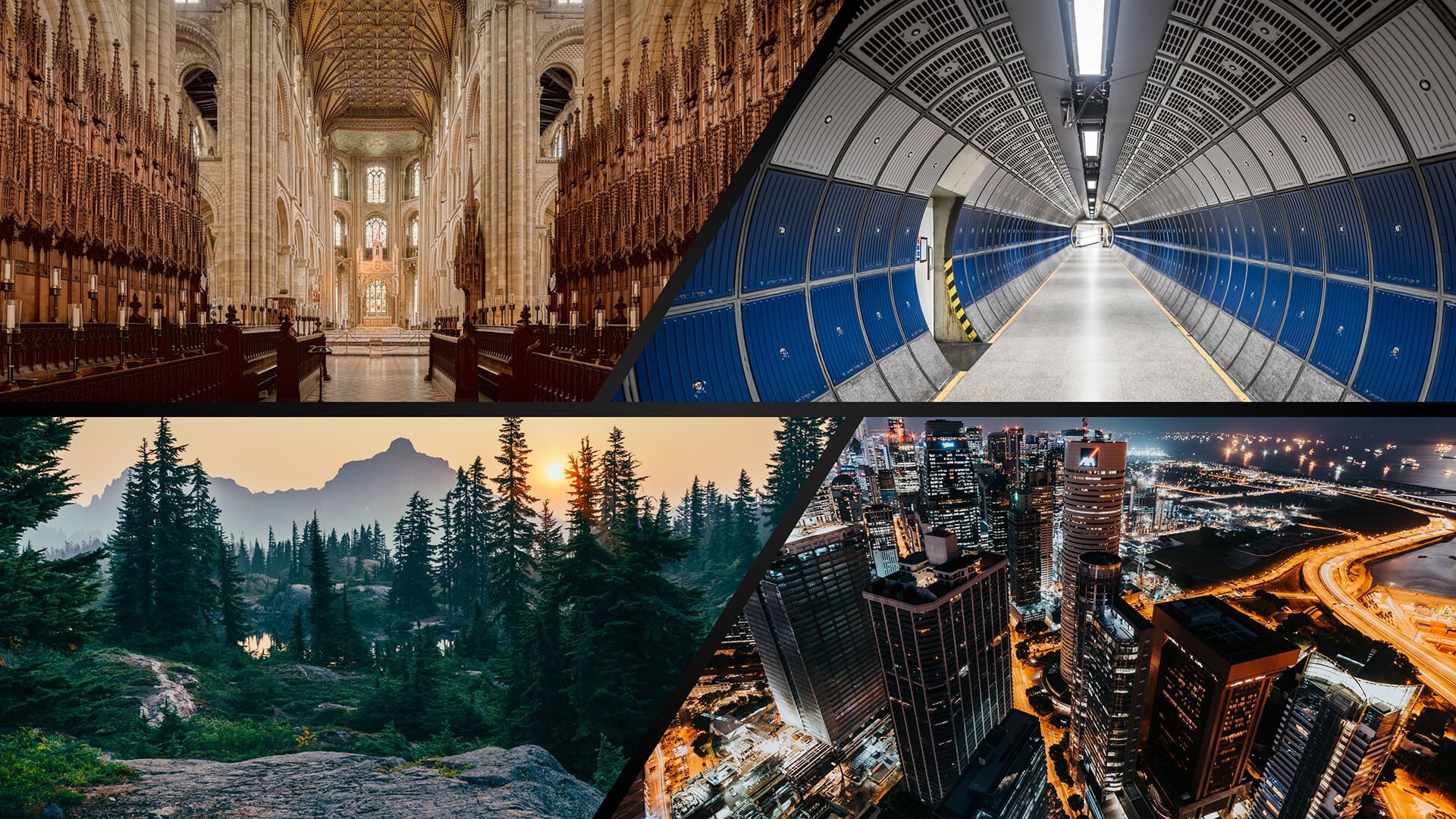
Basic attributes
As we see, noiseprints are very important parts of a good design. Actually, together with the reverberation (more on that in another article) carry most of the weight of creating immersion.
Anyone that played Limbo, Alan Wake, Mirror’s Edge, The Swapper, Metro: Last Light, Far Cry, SOMA, The Vanishing of Ethan Carter, Metroid Prime, Silent Hill, Doom and of course BioShock to name a few, experienced that deep immersion feeling I'm talking about. Those games utilize great use of different noiseprint loops to create the first layer of the environmental sound and signify the player of the location and point in the story's timeline.
Let’s highlight the most important parts of the definition that we gave above.
It’s distinguished by a lack of explicit background noise
That means that the noiseprint loop should not have any features that can be perceived as being something specific. Only the pure noise (random energy) should be included in this sound, to allow for the ambiguity that this kind of sound has in nature. Of course, if a noiseprint for example, represents an industrial production setting, it can have low frequency rumbling coming from the machines. But it shouldn't contain and pattern of repeatable sounds that gives out specific behaviors of the machines, like the pumping of a molding press or the air release of a pneumatic robot arm. Those sounds can be played back on top of the noiseprints and given randomization sound properties and 3D location within the game's world, to simulate better the environment and its behaviors and to create a dynamic soundscape for the player to immerse in.
Every location has a distinct sound, it’s like a fingerprint
Not only you should not use the same noiseprint for each type of environment, but also probably change it as the time of day changes in the environment you create. Of course you could utilize using the same noiseprint for specific or similar environments within your game, as a way to mentally tag those environments and put them under the same family. That creates a good atmosphere that also works like a user interface element. Informing the player that ‘now you are in that kind of place’. Very powerful if you classify your game’s locations right. A good idea further down this methodology, is to group your game’s locations according to the narrative of your game.
Digital (complete) silence is going to be perceived by the audience as failure of the sound system
Or even worse, failure of the creators to produce a quality product. A safety rule is that your executable should be engineered to ensure that a noiseprint will always playback no matter what happens. Even in states that only music would suffice, playing the noiseprint of the level that is loading, or a generic noiseprint that sets the mood of the game, will bind the music even more with the atmosphere of the game and the emotional side of your game's story. It will make music stronger for the player. Furthermore, if the sound stops completely in some point, usually on loading levels, loaders, menus, etc. The player will start noticing the sounds from her own room, the street noise from outside of the room, the air-condition unit, the computer’s fans cooling the processors, and many other noises that take away her brain from the world of the game and pulls it back in the real world. Very uncool.
[icon name="pen-square" prefix="fal"] Note
Noiseprints together with the reverberation carry most of the weight of creating a believable character of any location, which is one of the main characteristics of creating an immersive experience.
Best practices
OK great, we got a good handle on what kind of sounds the noise prints are. As promised from the article’s title, here are the basic tips on how to use them in order to get the most of them, brought to you directly from the SoundFellas internal knowledge-base.
Combine them with the reverberation
Use them with reverb. That will glue them with the rest of the sounds that pass through the same reverb, which creates a psychological bond of the location and the player, making a part of the player's mind believe that it is located at that place. If you have locations in your game that can be categorized in specific types of environments (For example, some of the rooms belong to an industrial setting and some of the rooms belong to a vast forest), you can filter the same noiseprint with different reverberation settings, relative to the material properties of each of your game's rooms. That way, all rooms that share the same setting use the same noiseprint but have different reverb. Using this technique you can create variation throughout your game's rooms and location sets, but with consistency between them, increasing the perceived quality of your game's atmosphere.
Smoothly transition between noiseprints
Use a scripted mechanic to cross-fade between them when the player is changing between distinctive locations. You can get the distance between the 2 location clear limits and the position of the player character in your game, and transform those numbers to a percentage of how much to lower the volume of each noiseprint's loop, according to the position of the player's character. That way you provide smooth transitions between the locations the player character is moving. Be careful, if the noiseprints are very similar, during same volume levels flanging may appear. To avoid it, test your level's transitions in a good listening environment or with a set of headphones.
Use specified loudness levels
Keep the loudness level true for all noiseprints, unless you are intentionally going for some creative sound design. Yes, a forest’s noiseprint played back louder that it should could be perceive like a broken refrigerator or a metal construction site and vice-versa. Of course, if you feel adventurous, you can try using various noiseprint in different volume levels, to dress-up locations in your game's world and listen to the result. A little random experimentation never hurt any designer, it's actually a recommended practice for discovering new experiences. A quick advice, be cautious when raising the volume level as it can introduce clipping distortion (a nasty noise) even when the audio meter shows a signal level below zero. Also don't forget that sound mixing eventually works in an additive way, adding signals together. So the end result of your game's sound is the sum of all signals that play back together. A good practice is to always check the final audio bus of the framework's mixing system for good volume levels.
Never stop never-stopping
Use the noiseprints sound even in the loading screens, as a way to introduce the next level/room, or use a specific noiseprint that sets the mood for all the game. Even better, create an application-wide fallback algorithm that fades in a specific noiseprint every time that the game has no sound at all or the state machine loads utility screens like menus, credits, network settings, etc. To do that, you should check out the documentation of the game development framework you use, in order to find out if it supports sound instances that are not destroyed during scene/level loading.
Classify, organize and rule them all
Group them differently to create consistency and empower the emotional aspect of the game. Some taxonomy ideas include but are not limited to:
- Open, closed and special spaces.
- Kind of environment, urban, industrial, natural, unnatural.
- Day or night.
- Friendly and hostile environments.
- Game states.
- Story-line position.
You get the idea. 😉
Conclusion
I think that we can all agree, that the subject of noiseprint usage in games is a very interesting one, and I would urge you to experiment with it and see by yourself what it can bring to your game’s aesthetics.
You could combine, create your own, and develop an algorithm that switches between the roomtones according to tags that flow back from the game logic, or even mix 2 or 3 roomtones according to what combination of location types and game states. That can create very strong immersion not only for the virtual location, but also used as a subconscious way of guiding your story.
You can start right away if you get anyone of our Ambience Kits, inside them you will find the extracted noiseprint loop for every soundscape included.
[icon name="check-circle" prefix="fal"] Success
Noiseprints are an essential part of the soundscape of any game, film, virtual reality experience, or other entertainment media. Don't forget to include them as a basic part in your project.

